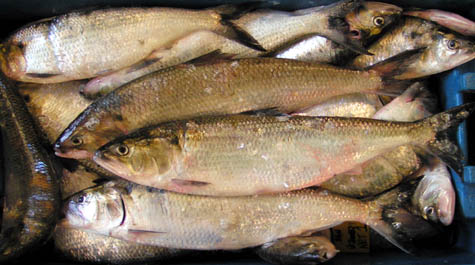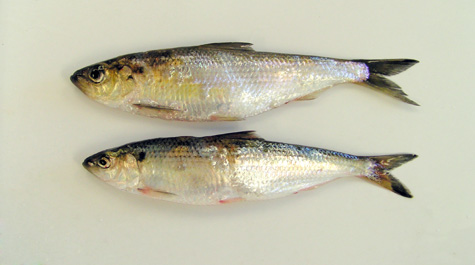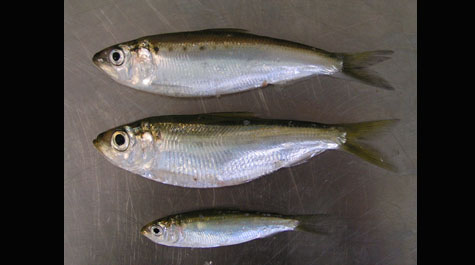American Shad & River Herring Monitoring Program
Since 1998, scientists at the Virginia Institute of Marine Science have monitored the spawning run of American shad (Alosa sapidissima) in the James, York and Rappahannock rivers. The information gathered from this program help to assess the population of American shad in the Chesapeake Bay and its tributaries. Aging of individual shad using scale impressions and screening for hatchery marks using fluorescence microscopy are key components of the program. In addition to the monitoring program researchers gather information on the American shad by-catch fishery established by the Virginia Marine Resources Commission. Samples of by-catch shad are collected from cooperating fishermen who obtain an American shad by-catch collection permit.
Alewife (Alosa pseudoharengus) and blueback herring (Alosa aestivalis) are collectively known as river herring. In 2014, an annual river herring spawning stock survey on the Chickahominy River was initiated using drift gill nets. The survey will expand in 2015 to include anchor gill nets on the Chickahominy River. Another component of the survey is nighttime trawling to measure the abundance of juvenile river herring and American shad. This monitoring program is the only fishery-independent program in Virginia. Information gathered from this program provides federally mandated monitoring data on American shad and river herring populations in Virginia.
The immediate objective of this study is to provide managers, principally the Virginia Marine Resources Commission(VMRC) and the Atlantic Stats Marine Fisheries Commission (ASMFC), with contemporary information for assessment of American shad and river herring stocks in Virginia's rivers. This monitoring program and its annual report to the American Shad and River Herring Technical Committee fulfill Virginia's responsibilities to the ASMFC. Our primary long-term goal is to provide a comprehensive plan of assessing stock status and management options for stocks of American shad and river herring in Virginia.




